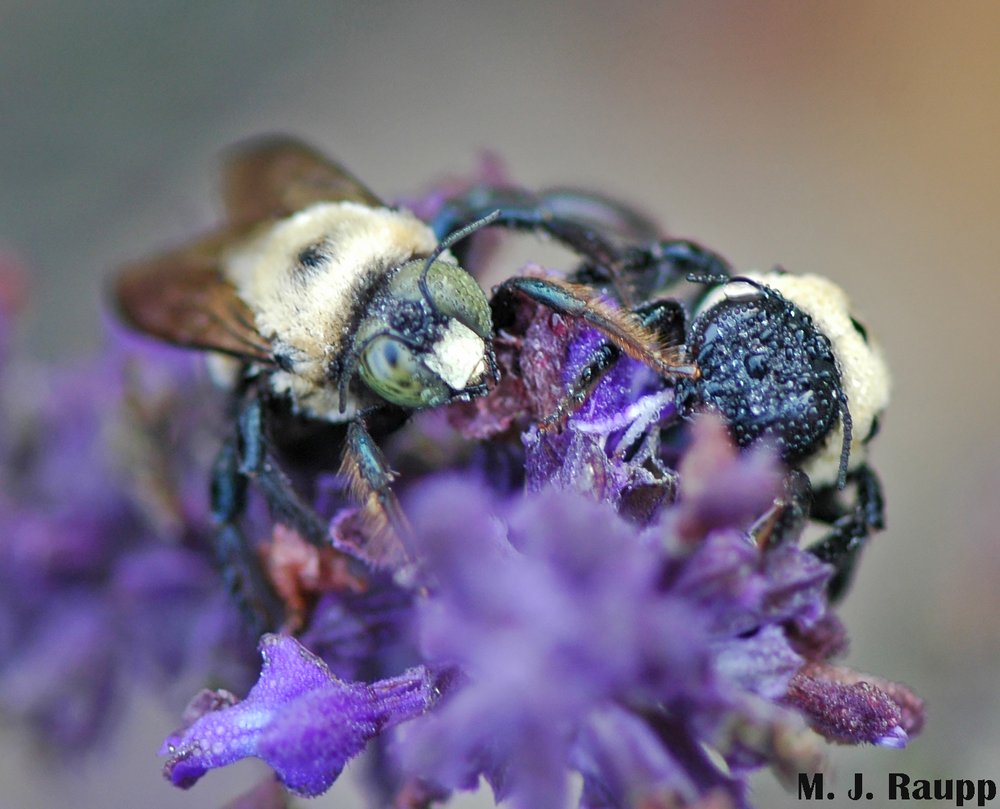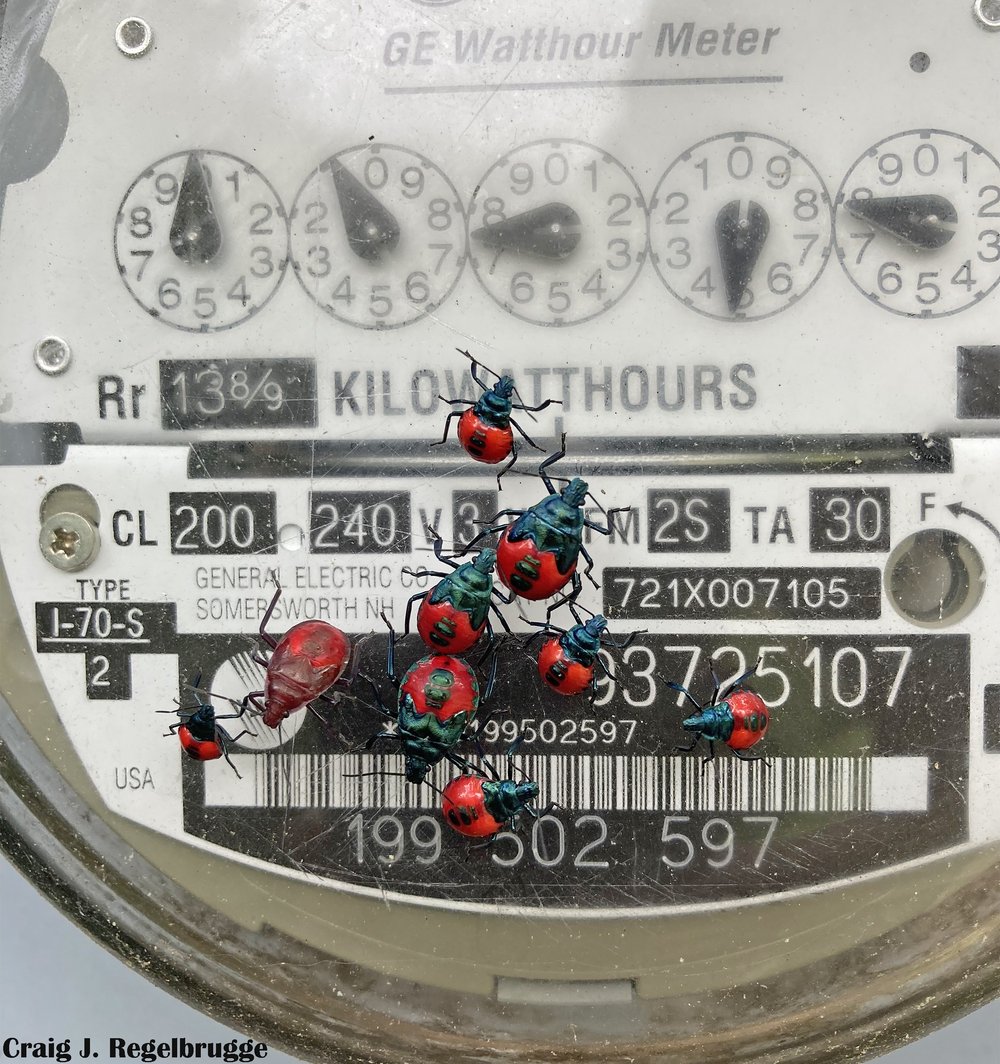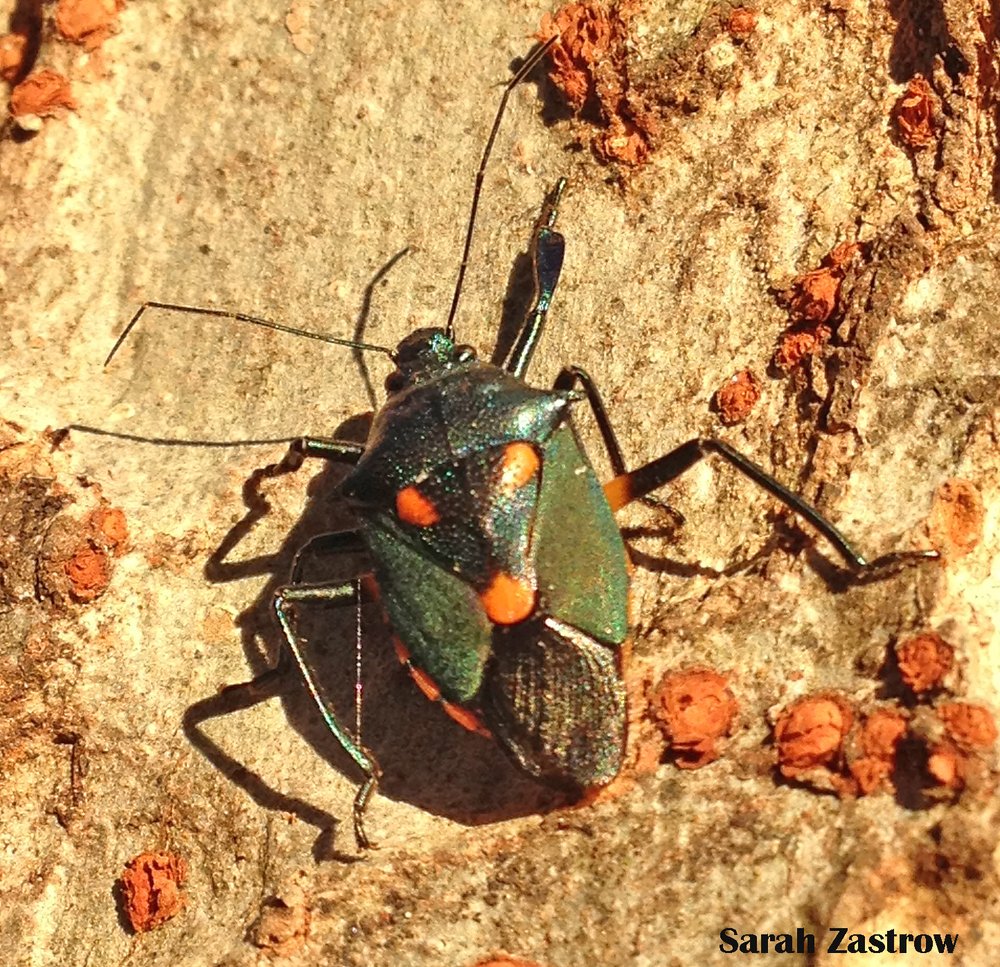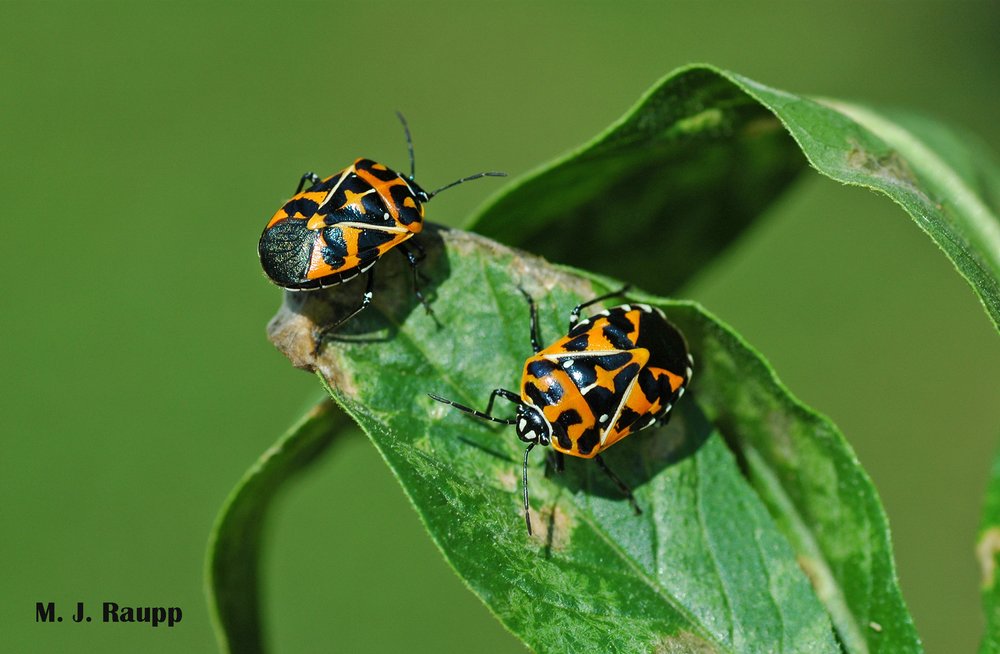Death of a lanternfly: What a frosty night means to spotted lanternfly, Lycorma deliculata
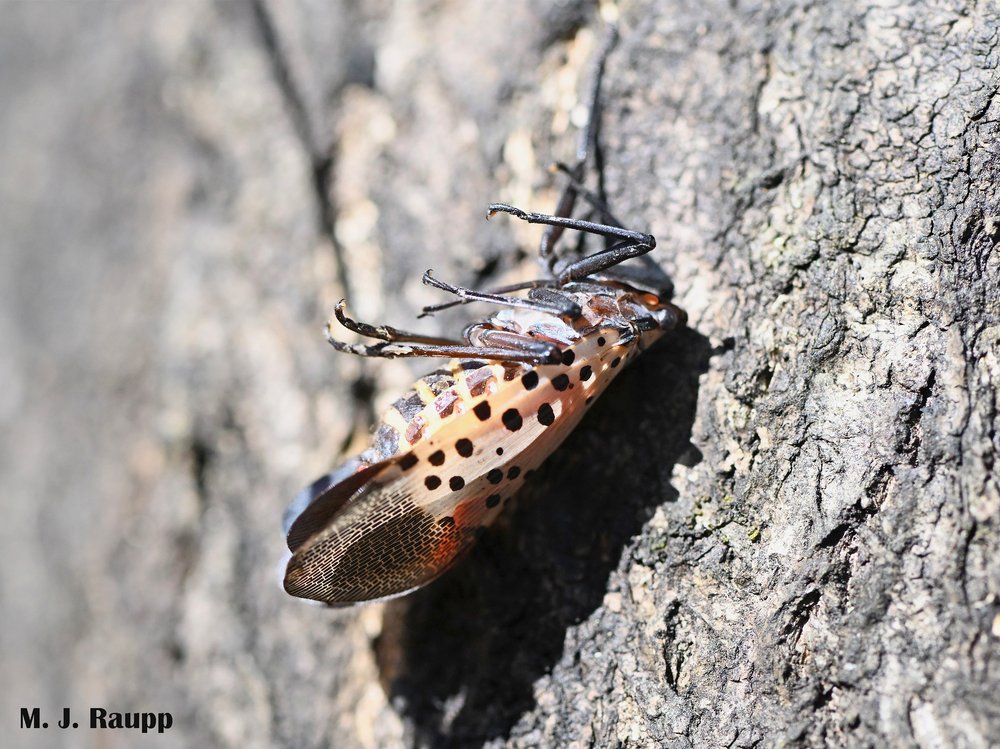
Frozen to death on a tree trunk with its beak still embedded in bark, a rapid drop in temperature caught this spotted lanternfly by surprise.
In previous episodes we learned about the introduction and spread of spotted lanternfly in our land, how their sweet, sticky honeydew attracts stinging insects, and why more people witnessed spotted lanternflies this summer and autumn than in years past. As Mother Nature sent a chilly blast to the middle Atlantic region just after Halloween, inquiring minds wanted to know if subfreezing temperatures put an end to the dastardly shenanigans of spotted lanternfly for 2023. Several news outlets report that prolonged temperatures below 28 degrees Fahrenheit are lethal to adult spotted lanternflies, the active feeding stage found on our plants at this time of year. Spotted lanternflies pass the wicked winter as eggs and temperatures must be much colder, in the teens and single digits to put a beat-down on egg survival.

At the base of a tree of heaven, a season of sucking sap and laying eggs ended when local temperatures dropped into below freezing.
To test the notion of a lethal 28-degree boundary, on November 2 Bug of the Week traveled to scenic Mercerville, MD near Antietam battlefield, where temperatures had dropped to 27 degrees Fahrenheit in the wee hours of the morning. There in a small woodlot rife with tree of heaven, a key food plant in the life cycle of spotted lanternfly, hundreds of spotted lanternflies had succumbed to the freeze. Many of the casualties lay scattered at the base of the tree, while higher up the trunk some were frozen in place with their sap-sucking beaks still embedded in the tree’s bark. Ah, but all were not killed by the frigid night. Nestled near the ground of several trees where the huge warm mass of Mother Earth and some insulating vegetation may have provided a thermal refuge, some spotted lanternflies survived. A quick tally of 100 lanternflies on a half dozen trees revealed 66% dead and 34% alive.
In western Maryland where temperatures dropped into the upper 20’s (Fahrenheit) the first week of November, spotted lanternflies were frozen in place on tree trunks. Some died with beaks still embedded in bark while others littered the ground. Further east where lows reached only 30 degrees Fahrenheit, survival was much higher and spotted lanternflies continued their mischief.
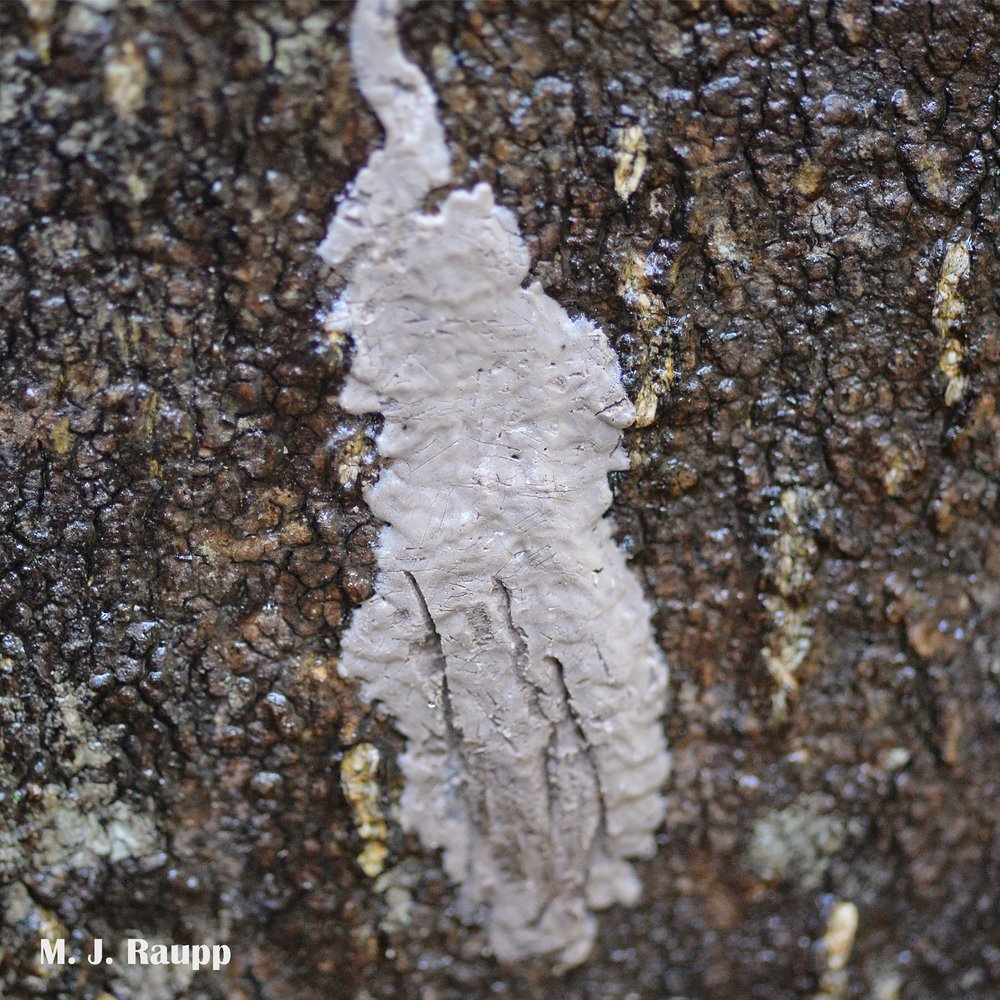
While temperatures in the 20-degree Fahrenheit range are lethal to adult lanternflies, much colder winter temperatures must occur before overwintering eggs will die.
Not one to miss an opportunity to delve a little deeper into chilly deaths of spotted lanternfly, we headed south and east to the somewhat warmer realm of Columbia, MD where on November 3 temperatures dipped to 30 degrees Fahrenheit. Here lanternflies fared much better with only 22% of lanternflies expired and 78% alive and well out of 200 examined. Of course, some of the mortality observed at the base of trees certainly could have resulted from spotted lanternflies punching their ticket to the great beyond after sucking sap for several months rather than being frozen to death. As scientists like to say, more data from the field is needed to fully understand the relationship between low temperatures and the annual swan song for spotted lanternflies. As temperatures rebounded into the upper 70’s and approached 80 in many locations last week, there was yet another opportunity to stand beneath tree of heaven and experience the honeydew shower of the spotted lanternfly. If this is not your cup of tea, rest assured that a seriously frosty night is just around the corner and it will shut the door on these noisome invaders for this year.
Acknowledgements
Bug of the Week thanks Dr. Shrewsbury for assisting with observations of spotted lanternflies. The wonderful reference “Impact of minimum winter temperature on Lycorma delicatula (Hemiptera: Fulgoridae) egg mortality” by Jung-Su Lee, Il-Kwon Kim, Sang-Hyun Koh, Sung Jong Cho, Suk-Jun Jang, Seung-Hyeon Pyo, and Won IL Choi was consulted for this episode.
This post appeared first on Bug of the Week
